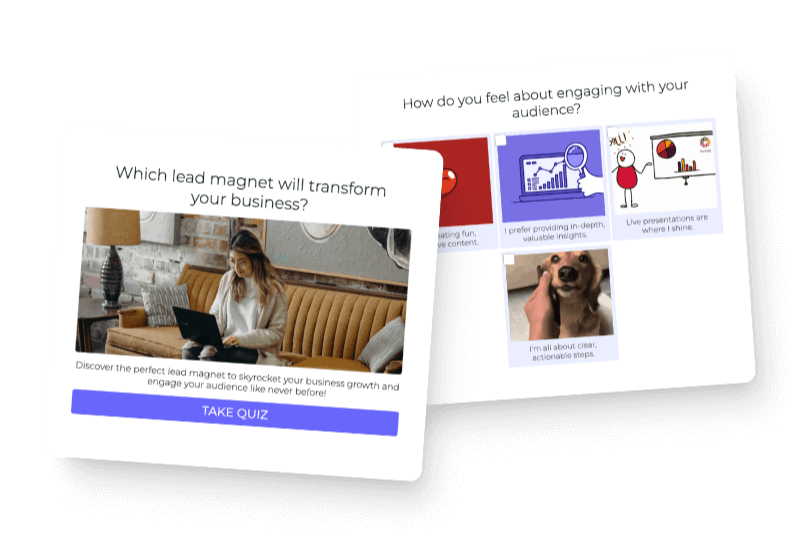People ask me a lot about whether they should frame their quiz content in a positive or negative way. They want to know if they should be giving people hope or addressing their fears. Here’s what the data says.
Should You Use Positive or Negative Emotions to Drive Higher User Engagement?
This data is from top performing quizzes that have been taken 10 million times generating 4.3 million leads for an average conversion rate of 43% which is very high – the user engagement on these quizzes is excellent.
Here’s the data on positive and negative emotions, with how each contributes to engagement rates.
Positive: 70% of quizzes: Defined as “Take this quiz to find a path forward that makes your life better” this type of quiz is framed in a way where it helps you identify a path forward and makes you feel good about your ability to execute on that path.
Neutral: 23% of quizzes: Defined as “Find the right product or solution that fits your needs” without assigning emotional value to the solution. These are fact-based quizzes, refraining from mixing in emotions.
Negative: 6.6% of quizzes: Defined as “You have a problem, this quiz will identify your problem and how to solve it” This quiz recognizes and plays into the negative emotions surrounding an issue and focuses on the negativity and how to remove the negativity, rather than the idea of a brighter future.
This data is charted out visually below, showing the discrepancy between positive and negative emotion.

What does this mean for user engagement as a whole?
Quizzes are a reflection of people’s inner dialogue. A good quiz aligns itself to what people are already thinking about and what they want for themselves. Using inference we can assume that people are thinking a lot more about how to get the life they want versus how to get rid of things they don’t want.
Shouldn’t I use negative emotions to drive engagement since the world is so negative?
This comes up a lot. Customers think that their audience is very negative and just wants to hear about all the problems. This could be a result of the Availability Heuristic, and a silo of negative news making it seem like everything is negative. But the data shows positivity is still the key to higher levels of engagement.
How do I make sure my quiz is authentic to my brand and doesn’t hurt my reputation as a serious person?
When we analyze the content and sentiment of the “positive” quizzes, we’re not talking about happy go lucky, pie-in-the-sky positivity. What we see instead is positive psychology, basically reassuring people that they are already doing great, and they can be even greater, rather than focusing on their flaws. The presentation and tone of the content does not need to be like a silly online quiz. It can be as serious and research based as you would like, the positivity is simply in how things are expressed.
